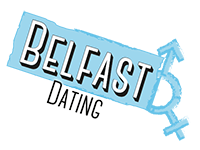Belfast - An Overview
Belfast, the capital and largest city of Northern Ireland, is located at the threshold of the River Lagan and is surrounded by low hills. It is a natural location for the shipping trade, one of the industries that made Belfast famous. After Dublin, Belfast is the second largest city in all of Ireland, with a population of 278,000 as of 2001.
The name “Belfast” comes from the Irish term Beal Feirste or “mouth of the Farset” in reference to the river on which the city was built. (The word “fierste” comes from the word “fearsaid” or “a spindle.”) Over time, the River Lagan has come to be regarded as the more vital river than the River Farset, especially since Farset now flows under High Street in virtual obscurity. Bridge Street, as its names suggests, indicates the location of the original bridge that crossed the River Farset.
Belfast rose to fame as a commercial and industrial hub during the 18th, 19th and 20th centuries. Behind such industries as linen, tobacco, rope-making and shipbuilding, Belfast became Ireland's most industrialized city during this time.
In terms of tourism, Belfast is a unique city known as the precise locale where the United Kingdom meets Ireland, yet completely different from any other area that either country has to offer. Recently, Belfast was selected as the fourth best city in the UK for a city break in the Guardian/Observer travel awards.
Belfast is a city that teems with activity and exudes an air of guarded optimism as new hotels, shops, bars, clubs and restaurants seem to be opening all the time. There is also a rich sense of history in the city, especially at the historic buildings that hint at the city’s rich Victorian and Edwardian heritage. Compared to Dublin, Belfast is widely regarded as a significantly less expensive and more rewarding tourist destination.
Belfast is also an excellent place to explore, despite its largely-criticized urban planning and long history of armed conflict. Ironically, this history of conflict lends an ever-present air of danger and excitement to the city and a pervasive feeling that something might happen. The locals like to say their city is a prime example of how ethnic conflicts should be handled anywhere in the world and boast that one can see more deeply into the British and Irish psyche by going to Belfast than by visiting Buckingham Palace or a Dublin Irish pub. In this way, Belfast is a place like no other and has something to offer that Dublin, Galway or Bristol cannot.
Based on the recent United Nations International Crime Victimization Study, Belfast is not as dangerous a city as its reputation might suggest. The study indicates that Northern Ireland is second only to Japan in terms of having the lowest crime rates in the industrialized and developed world. Apparently, most incidents involve the locals against one another, and tourists are largely left out of any incidents. Of course, it pays to be careful wherever you are and aware of your surroundings.
The residents of Belfast are an avid restaurant-going people, perhaps trying to make up for lost time after several years when they would not even dare to venture out of their own districts. There are many small fine restaurants all around Belfast. One rather strange source of local pride is the fact that the ill-fated RMS Titanic was built in Belfast (aside from hundreds of other ships that did not sink, of course). In fact, visitors can take a boat tour of the area where the Titanic was built.
One of the city’s most popular venues is the area between City Hall and Queens University, the main university of Belfast, since it is filled with many major bars and clubs. It is generally safe, except on Friday and Saturday nights when young revellers gather there after closing time and fights and minor scuffles regularly break out. For weekend trips here, make sure to organize your own transport as taxis are very difficult to find.
As a general rule, tourists should avoid making any overtly political statements when in Belfast unless they are confident with the company they are with. Certain sporting shirts, mainly those of the Rangers or Celtic teams in the Scottish football league, should also be avoided. The same holds true for English football shirts and Irish rugby shirts. If you are lost and don’t know where to go, it is more advisable to ask for directions rather than wander aimlessly carrying your directional map. Most Belfast people are very hospitable and helpful.
Tourists can visit Belfast any time of year, but perhaps the best time to visit is during April to June or in September when the weather is at its best, the crowds are thinner than usual while the main attractions are still open. The average temperature stays at a relatively mild 10°C (50°F) all year round.









